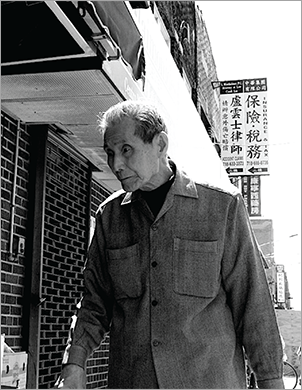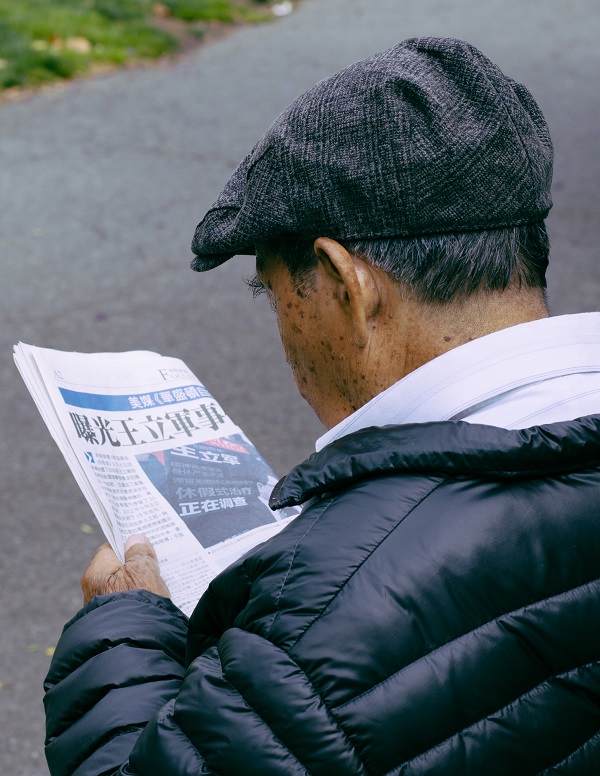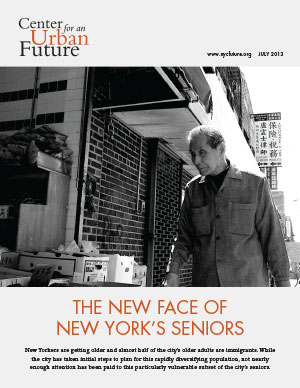Like so many Latinx in the United States, I was raised mostly by my abuela. It was my grandmother who took me to school in the morning and back home in the afternoon, and she always had food ready by the time my parents returned from work, English lessons, and college classes. My grandmother spoke no English. She studied only until the eighth grade back in Cuba, came to the United States with my parents, and worked on an assembly line in a cookie factory until she could qualify for Social Security. After retirement, she spent the rest of her life taking care of my parents, my sister, and me. Every Thursday—her only day off—she would treat my sister and me to one of the thousands of boxes of cookies that she packaged in a work week.
But her contribution to our family—and by extension, to America—went far beyond her meager earnings from factory work. By taking care of us at home, she made it possible for both of my parents to get educated, learn English, and hold down careers that eventually propelled us to the middle class. That foundation, in turn, made it possible for my sister and me to go on to good colleges and create careers of our own.
Changing Demographics
Abuela was also part in the greatest diversification of the senior population in the history of New York City. An analysis I conducted for the Center for an Urban Future showed that for the first time since World War II, half of all New Yorkers over the age of 65 were born outside the United States. While 95 percent of New York's older immigrants were born in Europe in 1950, today only 26 percent do. Currently, 23 percent are from Asia and Oceania, and fully 46 percent from Latin America and the Caribbean; an additional 13 percent of older New Yorkers were born in Puerto Rico. Altogether, Latinx comprise the single largest segment of the senior population in New York City.
New York's senior population crossed the one million mark this year, another historic milestone for the city. There are now more people who are 65 and older in New York City than there are children ages 10 and younger. Immigrants—and Latinx in particular—are responsible for virtually all the growth in New York City's senior population. Between 2010 and 2015 the number of older immigrant New Yorkers increased 21 percent, and in the decade before that their numbers swelled by 30 percent. In contrast, the native-born senior population shrank by 9 percent between 2000 and 2010 and then rebounded by only 6 percent in the following five years. More than nine out of ten of these seniors arrived in the United States when they were younger and entered la tercera edad in this country.
Public Policy Challenges
The rapid diversification of New York's senior population is interesting enough on its own, especially as it reflects the liberalization of immigration laws in 1965, which opened the doors to immigrants from non-European countries. But this diversity also presents some considerable challenges for public policy and social services. Immigrant seniors are much more likely to be poor: 22 percent of older immigrant New Yorkers live in a household whose income falls under the federal poverty line, compared to 15 percent of native-born seniors. At the same time, nearly three in five older immigrants speak English less than very well, and 36 percent are linguistically isolated, meaning that nobody in their households over the age of 14 speaks English.
Language Barriers. Latinx face some of the steepest language barriers among the city's ethnic groups: fully 96 percent of seniors from Mexico have limited proficiency in English, the highest rate of any country or region of origin group in the city. Similarly, 89 percent of seniors from the Dominican Republic and 84 percent of seniors from Colombia struggle with English. Latinx seniors also top the charts regarding poverty levels. Seniors from the Dominican Republic have the second highest poverty rate in any country or region of origin group in the city, at 36 percent, followed by Mexican seniors at 30 percent.
Social Service Needs. Greater average poverty levels imply a greater need for social services, yet the services that are available to help seniors and their families with housing, healthcare, caretaking, and other important issues are less likely to reach immigrants, often due to linguistic and cultural barriers. The city contracts with large social services organizations that serve seniors and many of those contracts have been in place for decades. While some of those contract holders have made great efforts to respond to the changing demographics of the senior population, not all have done so. Moreover, because these contracts are designed for large senior services organizations, they are mostly out of reach for the smaller, community-based organizations that are more likely to have the trust and the cultural capital to work with seniors and their families in immigrant communities.
Support for Senior Services
Yet support for senior services has been stagnant. Federal funding of New York's senior services through the Older Americans Act-the nation's main source of funding for senior services-has plummeted 36 percent in the last decade. The current mayor has counteracted some of this shortfall by putting an additional 25 percent into the budget for the city's Department for the Aging (DFTA) since taking office three years ago. And just this week Mayor de Blasio announced that his administration is baselining an additional $22.8 million of DFTA's budget, partly in response to research conducted by my organization, the Center for an Urban Future, combined with the efforts of several strong advocacy organizations. But those increases merely edge the agency's budget up just above where it was in 2008 when the city was home to 92,442 fewer seniors.
Role of Immigrant Grandparents
Our immigrant grandparents are at once some of New York's most vulnerable citizens as well as major enablers of economic opportunity in our immigrant communities. Out of the more than 158,000 households in New York City where a grandparent shares a home with their own grandchildren, 71 percent are immigrant or Puerto Rican households. And half of these multigenerational families are Latinx. In many cases, these grandparents are helping take care of children and the home while working parents are away, as my grandmother did.
But as was the case with my grandmother, there comes a time when the family needs to take care of its older relatives in return. In this time of need, it is crucial that seniors and their families have access to services like paratransit, in-language medical care and health counseling, senior centers, caretaker supports, and housing assistance. Too often, families are stretched beyond their ability to provide complete care for an elderly family member for want of the right information and access to services. As a result, caretakers are often forced to derail careers and sacrifice their incomes for the well-being of their older relatives. Most often, it is the women in the family who give up careers to care for others, which perpetuates gender inequality in incomes. At the same time, struggling immigrant families cannot afford to take a hit to their incomes and career trajectories in order to care for aging relatives.
Building a Safety Net
Building a safety net for the largest and most diverse senior population in the history of New York City will require a thorough reconsideration of how services are delivered, how seniors and their families access information, and what seniors need not just to survive, but thrive. It will also require that services be funded at the level necessary to support the growing workforce that is at the front lines of senior services: case managers, medical professionals, home health aides, and many others. With half of the city's senior population hailing from outside the United States, we cannot rethink senior services without considering the unique needs and challenges facing immigrants.
Taking care of the older relatives who took care of us is not only the right thing to do, it's an investment in one New York's most unsung yet powerful assets in expanding economic opportunity. Through the contributions of our older generations, the next generation of New Yorkers can thrive.
Please check out our other publications exploring the effects of New York City's aging population, including The New Face of New York's Seniors and The Aging Apple.
Photo Credit: Susan Sermoneta




